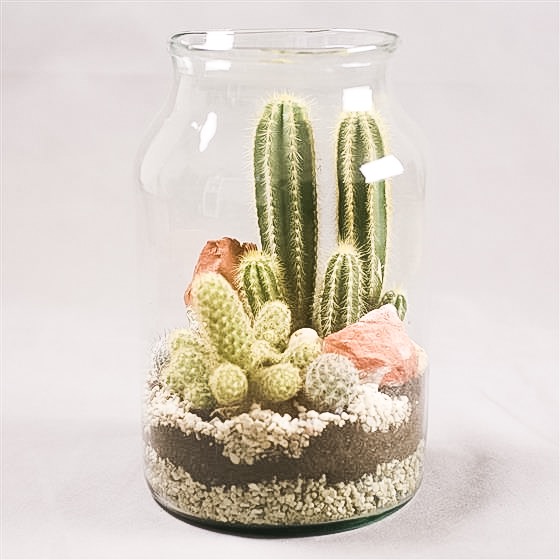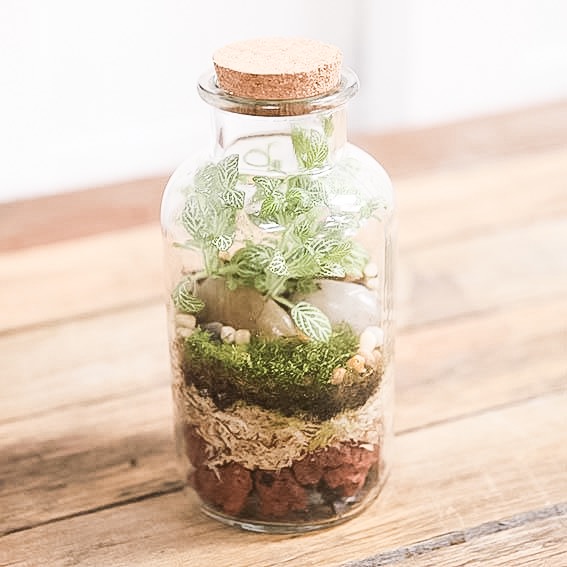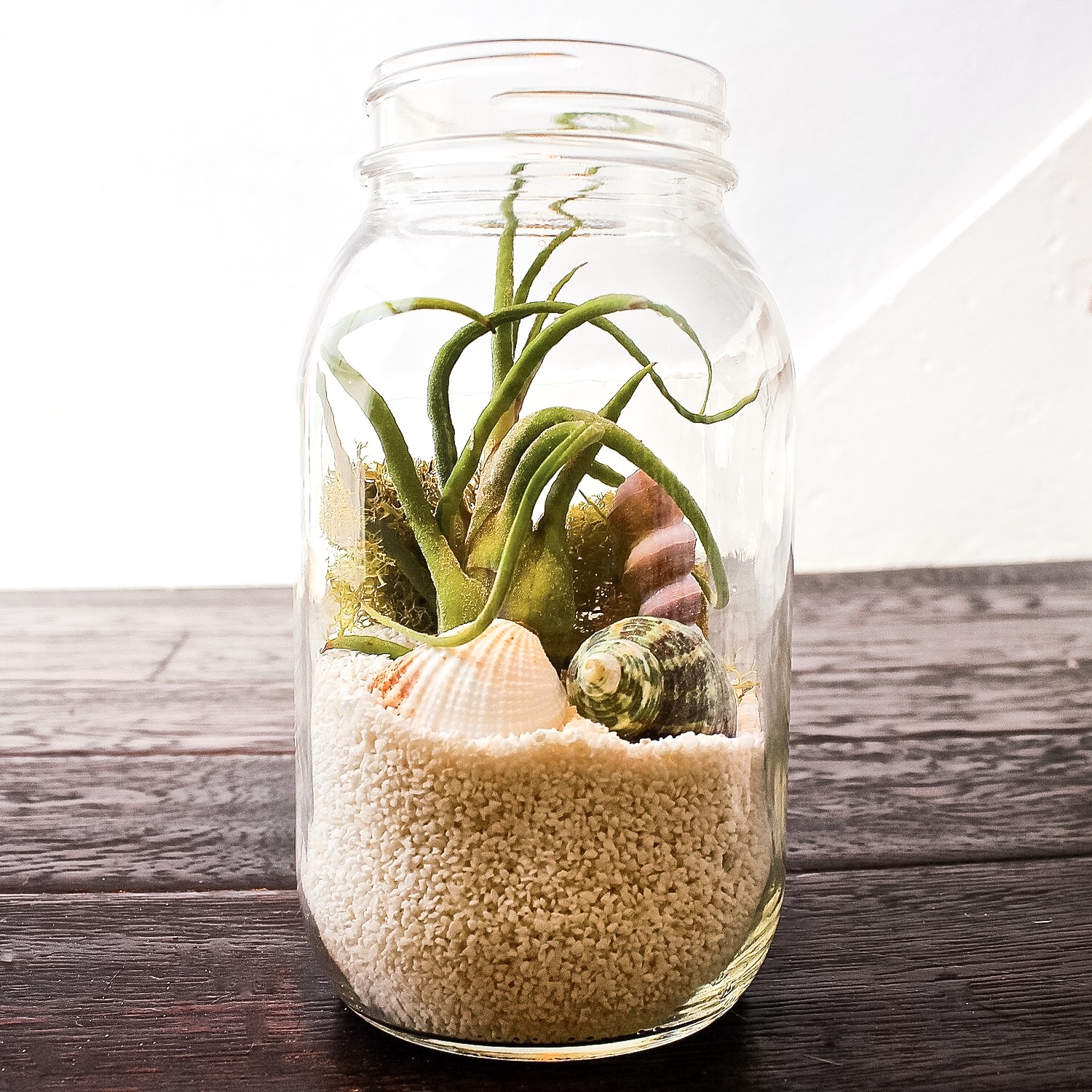Building your own terrarium is a fun, easy project. We find it to be a very therapeutic process, and when done properly your terrarium can last for many months or even years! The main things to consider are: Drainage materials, light and water.

For a Cactus or Succulent Terrarium
- Drainage Materials: Succulents and Cacti have very shallow roots, and that's for a reason -- they barely really need them! They retain water inside their main structures, which is what gives them that "succulent" appearance. For these terrariums you'll be building layers of materials mostly for aesthetic reasons, and you only need a little bit of soil near the surface. Put rocks, orchid bark, sand or charcoal at the bottom so there's a clean place for excess water to sit without drowning the roots.
-
Light: Bright, if not direct light works for most succulents with the exception of some lower-light tolerant species like Haworthia and Gasteria. It’s best to choose a very bright spot but not in direct sun since the glass will magnify it. Cacti will do fine in direct light even through glass.
-
Water: Succulents are drought tolerant plants, and are highly susceptible to root-rot and cacti even more so. Since this container does not have drainage holes, you'll water your succulent terrarium very sparingly, when the soil has gone almost completely dry. If you choose to create a succulent or cacti terrarium, leave the cork lid off or there will be too much humidity in your container. Water sparingly around the base of each plant using a watering can. Most succulents will tell you when it's time to water by puckering slightly in their leaves. If their leaves turn mushy or black, you’re watering too much and they’ll need to be replaced. You can reduce the number of times you water your terrarium during the winter. There are jungle cacti which have their own care instructions, so you’ll want them in different conditions like less light and they’ll require more water.

For a Tropical Terrarium
- Drainage Materials: Tropical plants need somewhere for their roots to establish, so you'll likely want to include soil in your terrarium if you're going to place a fern or other small tropical plant. Put rocks, sand or bark at the bottom to create a reservoir for excess water, and then layer your choice of sand, moss, etc.
- It will be easier to put your plant into your jar, THEN add soil and other materials on top of the roots than it is to try and plant the roots after you've added all your materials.
-
Light: Most tropicals like medium-bright indirect light. The leaves will burn if tropicals get too much direct sun through the glass.
-
Water: Although you can water tropical plants more, you still don’t want to over water these plants in your terrarium. Allow the top inch or so of the soil to go dry between waterings, and water at the base of each plant using your watering can or spray bottle. Between waterings, these plants will love a spritz from a mister and leave the cork lid in place to promote a humid environment. The leaves will tell you when it's time to water since they will wilt slightly between waterings or turn brown and crispy. Mush stems or yellow means too much water and it’s time to replace these. Water less during the winter.

For an Air Plant (Tillandsia) Terrarium
- Drainage Materials: Tillandsia do not need anywhere to put roots down, so it's your choice which materials to put into your jar and the order of the layers. Tillandsia can rot if they are ever sitting in water, so it's best not to use soil as the top layer, which can retain too much moisture. We recommend sand, rocks, bark or moss as the surface to set your air plant on.
- Light: Air plants like bright indirect light. Too much heat can dry out your air plant, though leaving the cork on your jar will help retain the humidity inside.
- Water: Best practice for watering your air plant is to remove it and soak it completely every week or so. In a humid terrarium there will be much less need for removal and frequent watering, but make sure there is some moisture inside your jar. There is no need for any soil since tillandsia don't put downward roots like most plants. You can rest them on rocks, sand, bark, moss or any other surface, just make sure that surface is not wet all the time, as it can cause your air plant to rot.
